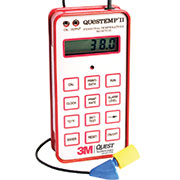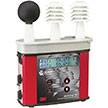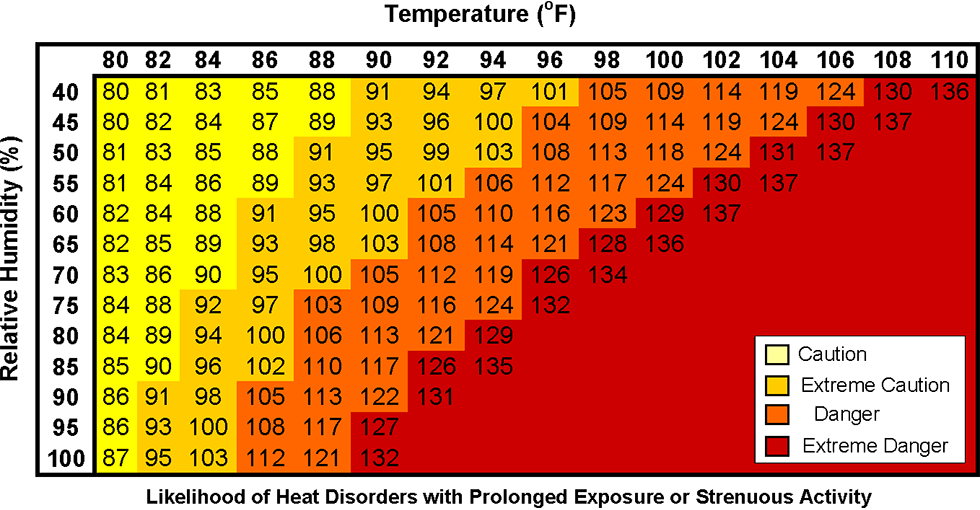Avoiding heat stress and heat-related illnesses
I don’t watch a lot of TV, but I admit: I really like the show Undercover Boss. It profiles how out of touch executives can be with their own employees, and how important it is for workers to feel connected to management. On a recent episode, two employees in a large Southern US warehouse facility complained of working conditions and the heat levels they were exposed to daily. One employee filled boxes with merchandise, and the other put those boxes into semi-trucks for shipping. Both areas were poorly ventilated. To add to their frustration, the company had sport drinks in plain sight of employees, but kept them locked up only for “special occasions” or “excessive” heat.
When the CEO stepped in to do these warehouse jobs, he realized that on most days, the summer heat created a problem for workers, and that “excessive” heat was more the norm than a “special” circumstance. So, the company installed more fans and opened the refrigerator of sports drinks any time temperatures reached a certain level. It seems like every year we hear about marathons and football practices that have ended in tragedy, and the culprit is very often caused by heat exposure. At this year’s Boston Marathon, a day with near-record temperatures and high humidity, the defending champion dropped out of the race at the 18-mile mark because of heat-related cramping. The night before the race, the Boston Athletic Association even went so far as to encourage first-timers not to run due to the impending heat, and nearly 4,300 people took them up on the offer. Even then, more than 900 runners sought medical attention from the heat on race day, the highest number in 22 years, according to EMS World. It’s no surprise that since they’re exposed to extreme heat every day, that firefighters are among the most aware professionals when it comes to detecting and preventing heat stress. They have several procedures in place to protect their teams:
- Routine physical training, since fitness plays a part in how well a person tolerates heat.
- Pulse, blood pressure, temperature, and weight measurements after major events, to make sure they’re recovering properly from extreme heat exposure.
- Work/rest regimens: A local rescue team told us they use a two air-tank maximum during fires. If a firefighter is in a respirator long enough to use two tanks of air, they’re required to leave the action and rest.
We can all appreciate the care and training emergency rescue teams go through to protect their workers, but what about construction workers who are outside in extreme heat during the summer, school and community outdoor summer sports programs, people in confined spaces with inadequate ventilation, or those two workers in the warehouse from that episode of Undercover Boss?
Know the Guidelines
A lesson we’ve learned from our firefighter customers is that the first lesson is to know the points at which heat-related illnesses occur. Awareness and worker education will play a large part in reducing workplace heat-related illnesses. The information is available for coaches, race coordinators, and warehouse managers to better gauge the necessity of rest periods and other protective measures (ventilation control changes) during extreme heat conditions. 3M QuestTemp products are designed to provide the data to monitor these situations and take action based on their readings.
- 3M QuesTemp II personal heat stress is a wearable personal monitor for measuring core body temperature, and
 calculating stay-time measurements so you can manage work/rest regimens
calculating stay-time measurements so you can manage work/rest regimens - 3M QuesTemp 36 portable area heat stress monitor is a portable monitor for temperature, humidity, and air velocity, and provides wet bulb globe temperature
 (WBGT) indices for both indoor and outdoor environments
(WBGT) indices for both indoor and outdoor environments - 3M QuesTemp 46 portable heat stress monitor with waterless wet bulb technology provides the same measurements as the QT36, but uses a waterless wet bulb for reduced daily bulb maintenance
This chart, from OSHA’s website, provides a basic guideline for risk levels and protective measures. Click the links for OSHA recommendations for worker health and safety in high temperature environments.
| Heat Index | Risk Level | Protective Measures |
| < 91°F | Lower | Basic heat safety and planning |
| 91° to 103°F | Moderate | Implement precautions, heighten awareness |
| 103° to 115°F | High | Additional precautions to protect workers |
| >115°F | Extreme | Triggers aggressive protective measures |
The US National Oceanic and Atmospheric Administration’s (NOAA) National Weather Service produced this heat index chart, so you can take into account both temperature and humidity in determining what heat-stress precautions are necessary in your daily operations. 
If you want to learn more, read about heat stress prevention and work-rest regimens with these three articles.
- Protecting Yourself from Heat Stress - U.S. Centers for Disease Control
- Heat Stress Prevention Tips from RAECO Rents and 3M Quest
- Work/Rest Regimens as a Heat Stress Management Tool - 3M Quest
